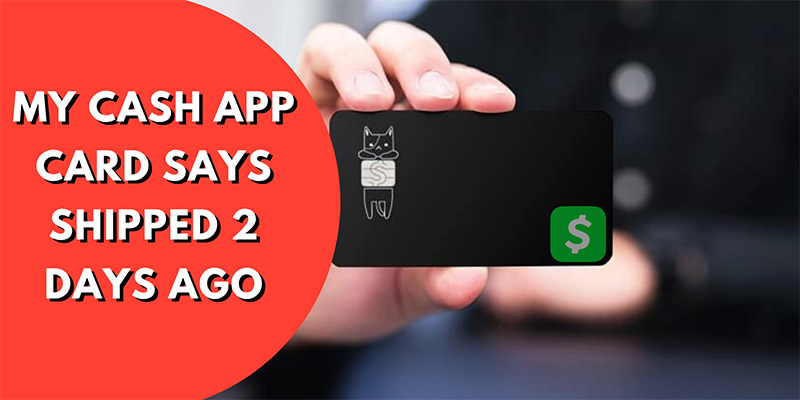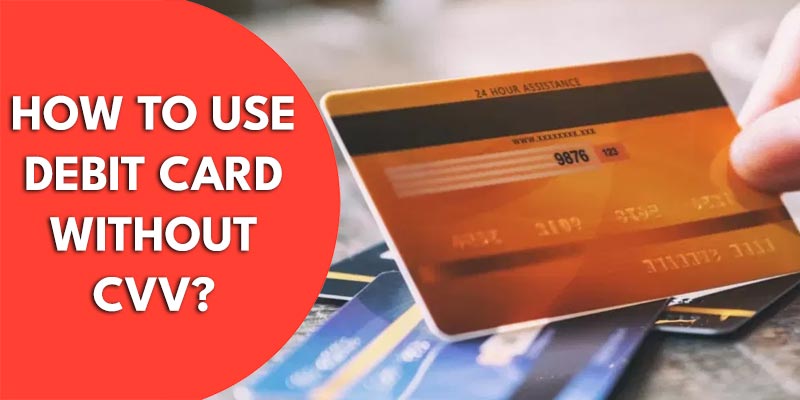Can you imagine, you wake up to a notification that the payment you just made- that’s credit card fraud? It’s time to learn how can someone use my credit card with just the number and CVV. Credit card fraud happens when someone uses your credit card without permission to make purchases, pay bills, or withdraw cash.
Fraudsters don’t need your physical credit card, they just need a credit card number and CVV that can easily steal from you. Today, you will learn how someone can use your credit card with just a number and CVV.
Can someone use my credit card with just the number and CVV?
Fraudsters can use anyone’s credit card without having it physically. Since, they have all the information, they can easily use the credit card to shop online or transfer funds to anyone. During the checkout process, they just enter card details correctly, and the shopkeeper assumes that you are the real owner of the credit card.
Anyone can withdraw cash from the bank using a credit card when paying for goods in-person or online or withdraw from an ATM. Sometimes, credit cards act as cash, they credit and help you to spend money from your bank account.
The main difference between a credit card and bank-notes is that a credit card identifies you and includes security features indicating that only you can use it. These security features are-
- 16 digits of Credit card number on the front side.
- Expiry dates which indicate the validity period
- CVV number- an extra layer of security
CVV (Card Verification Value) number is crucial for every physical card because it adds an extra layer of security. You must enter the CVV code to make payment online using a credit card. It is also known as two-factor authentication.
A CVV number is required for most websites, while few stores such as gift card stores, grocery stores accept shopping online with no CVV. You will see the CVV number on the backside of the credit card with a small print. Fraudsters can’t easily identify this number, without holding the card close to their eyes.
It is important to keep your CVV number top-secret to protect funds. Otherwise, fraudsters may find it to use later without permission.
How can fraudsters get your credit card details?
Your eyes will be stuck when you see unauthorized transactions on your credit card. A question will pop into your mind, how did someone use my credit card without the card? For fraudulent activities, they don’t really need your credit card.
This is known as card-not-present fraud. It happens when a thief steals credit card information and uses it to make purchases or pay bills online. With your credit card information, a thief has a virtual version of this credit card.
They can steal credit card details in many ways.
1. Physical credit card theft
We carry credit and debit cards in our wallet. If we lose it or it is stolen by someone, we eventually feel worried about credit cards. Because credit cards are most important and linked with bank accounts.
However, he can’t withdraw from an ATM with a stolen credit card as it requires a PIN to make a withdrawal. There is a chance that a thief can use this card to shop online or pay for goods.
You should keep your credit card safe and notify the bank in case you lose it or it is stolen by someone.
2. Skimming
Expert fraudsters can clone your card without notifying you. They can use it to make unauthorized payments online. They use a special machine that can collect, read, and store data on a card’s strip.
After collecting important data, they make a counterfeit copy of your credit card. Look carefully at what the cashier is doing with your credit card at the store. Be sure they don’t swipe it with another machine.
Card skimmers are usually familiar with these machines. Currently, they use Shimming technology to steal card details and store them on chip cards. They play mind games with card readers to steal information when the credit card is inside the reader.
3. Shoulder surfing
It’s a straightforward process to steal credit card information. When you input a PIN at an ATM or POS machine, the thief will watch over your shoulder from behind you. They will remember the PIN code you just entered into an ATM or POS machine.
If they successfully skim and clone your credit card, later they can make a counterfeit copy to use for online purchases, pay bills, or withdraw from an ATM.
4. Phishing
Phishing can happen in various ways. Most fraudsters use email phishing to catch card owners. When you receive an email or message, it looks like it is from a bank institution or credit card company, but in reality, you just received your first attempt from a fraudster.
If you tap any link or give real information, they will trick and collect your credit card information including your CVV number. Usually, those messages come with some enticing offers just like limited-time offers, and try to pick your attention.
The link will take you to a phishing website and ask for credit card information to make a purchase. Scammers always steal card details differently and Phishing is one of the successful ways for them.
5. Malware
Malware is a software program that can damage, disrupt, or unauthorized access to computer systems. It infects the computer system when you download a malicious app or visit a malicious website.
This malware program can steal user passwords, credit card, and debit card details. Some malware apps install automatically on your computer without notifying you and record what you type on the computer, including card details during checkout.
6. Friendly fraud
Friendly fraud activities happen when a family member or trusted person uses your credit card without permission. Most of the time, you can’t prevent this activity, because you trust them. And they have access to your wallet, card details, etc.
What is a card-not-present (CNP) transaction?
Card-not-present (CNP) means a credit card is not physically present during the checkout process. CNP transaction means the credit card isn’t in contact with the payment terminal.
No chip card was put into the card reader, no magnetic stripe was swiped, and no card was tapped for contactless payment using NFC or RFID technology. If a transaction directly involves contact that’s called a card-present transaction.
Card-not-present transactions are basically used for online shopping, phone call orders, and online payments. Merchant manually enters the card details with a payment terminal like POS instead of inserting, tapping, or swiping the card.
What are the 9 types of Card-Not-Present Transactions?
When a cardholder thinks of a card-not-present transaction, he focuses on debit or credit cards in different physical locations. This type of transaction occurs when the cardholder, the card, and the merchant are in the same place.
Card-not-present transactions will only happen whenever all three are not in the same location. Here are 9 common examples of card-not-present transactions.
- Online transactions: Customers, cardholders, and the card are in the same location while the merchant is elsewhere. Merchant uses CVV, and AVS verification to identify customers.
- Cloud wallet payments: Customers can use mobile wallet payment systems for everyday purchases, where the customer and merchant are in the same place but the card is not physically present.
- Online orders: Customers can add favorite products to shopping cards and use card details during the checkout process.
- Phone orders: Customers can make orders over the phone call and give the sales agent credit card details to process the payment.
- Buy online, pick up in-store: It’s like online orders, but customers must pick up the order from the destination. It will not be delivered by the delivery man.
- Recurring payments: It works when a customer uses a recurring delivery method and purchases products from the previous website, then their payments will complete automatically based on credit card details that are already stored in the retailer’s system.
- Mail orders: In mail orders, payment is usually sent by post. It happens when you order from a physical product catalog.
- Card-on-file payments: Customers can permit retailers to save credit card details for future purchases, which the retailer can utilize whenever a client wishes to make an online purchase.
- Invoice payments: A customer uses an online payment method to pay an invoice you’ve submitted and issued.
How to protect your credit card information?
Just properly secure your cards. If someone can’t access the card or card details, they can’t misuse it. Here are a few ways to protect your credit card from fraudulent activities.
1. Be careful when using your card in stores
Always hide your PIN code from the side view. As I mentioned above, someone can steal a PIN code by shoulder surfing. Make sure no one can see and memorize the card number, CVV, and PIN. Never allow the cashier to take your card outside your view.
They should swipe it where you can watch. A Cunning scammer needs only a few seconds to swipe your card on a skimming machine. So, watch out what the cashier is doing with your credit card.
2. Don’t open links in messages or emails from strangers
Never tap on a link in messages or emails, if things look suspicious. Normally, it looks authentic and comes from a banking institution, in reality, it’s a trap. You should contact the bank or credit card company about the messages you receive.
3. Always use updated software
You will be notified when a software releases a new update. Keep your installed software up to date because outdated software makes your computer vulnerable and has a high chance of attacking malware.
4. Choose a strong PIN
Fraudsters don’t need your PIN to do card-not-present scams. A PIN is only required when they pay for goods in person.
So, never share your PIN with anyone. Or you can change the PIN monthly, quarterly, or yearly for safety purposes. Most banks have mobile banking apps, you can reset the PIN from the app easily.
5. Check your bank statements regularly
Without a manual check of your bank statement, you can’t be sure if your credit card has fallen into the wrong hands. Do this regularly to stop fraudulent activities before the account is empty.
Report immediately if you see any unwanted transactions in your bank statement. First, you should change the PIN or freeze the card to prevent fraud for another transaction. Then you can also file a police report.
Is It Safe To Give Your Credit Card Details Over the Phone?
Credit cardholders believe making purchases over the phone is secure. In reality, your card details are stored on merchant storage. It can be a potential theft when a data breach happens.
It seems your financial information won’t be exposed due to transactions over the phone as it is difficult to store. No, it’s not like that. Since Merchant can’t see your card credentials, you have to tell them the details over the phone. Those details are-
- Your full name
- Card number
- Card expiry date
- CVV number
Since you are talking with a sales agent during purchase, it could be riskier if he compromises your data or someone connects to the conference call to steal your information.
I’m not sure, but it’s possible. You have to keep that information confidential as much as possible. Avoid any card-not-present transaction.
Final Word
Credit card theft is harmful, you can even lose your entire life savings. With just a credit card number and CVV, someone can use your card without permission. It can be used to make purchases online and pay bills online.
It is mandatory to keep your credit card in a secret place. Or you can use a virtual bank or virtual credit card that has no physical copy. It is available in cloud stores but has the card details (Card number, CVV, Expiry date).
You can memorize those numbers and use them later. There will be no physical credit card.



